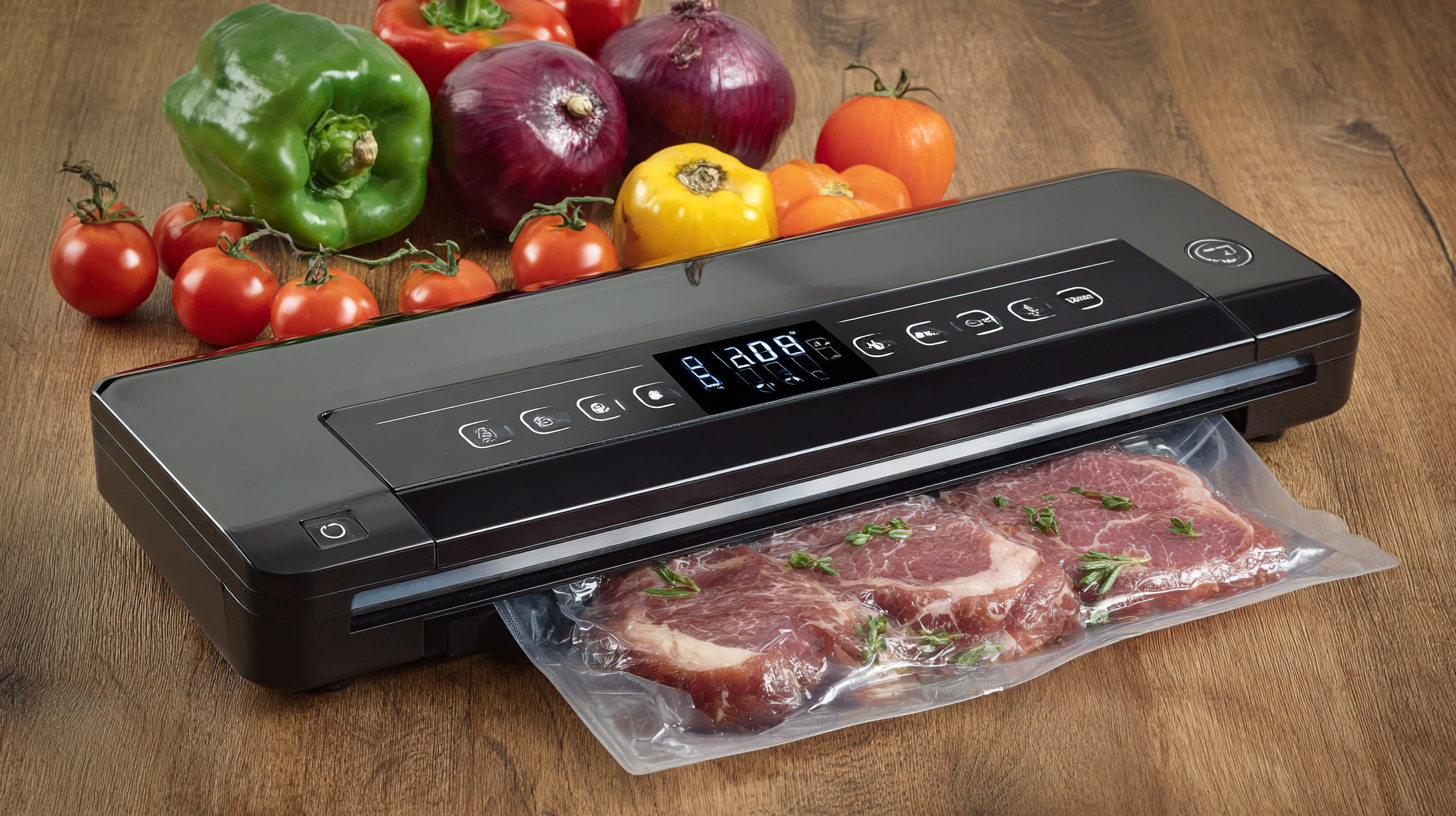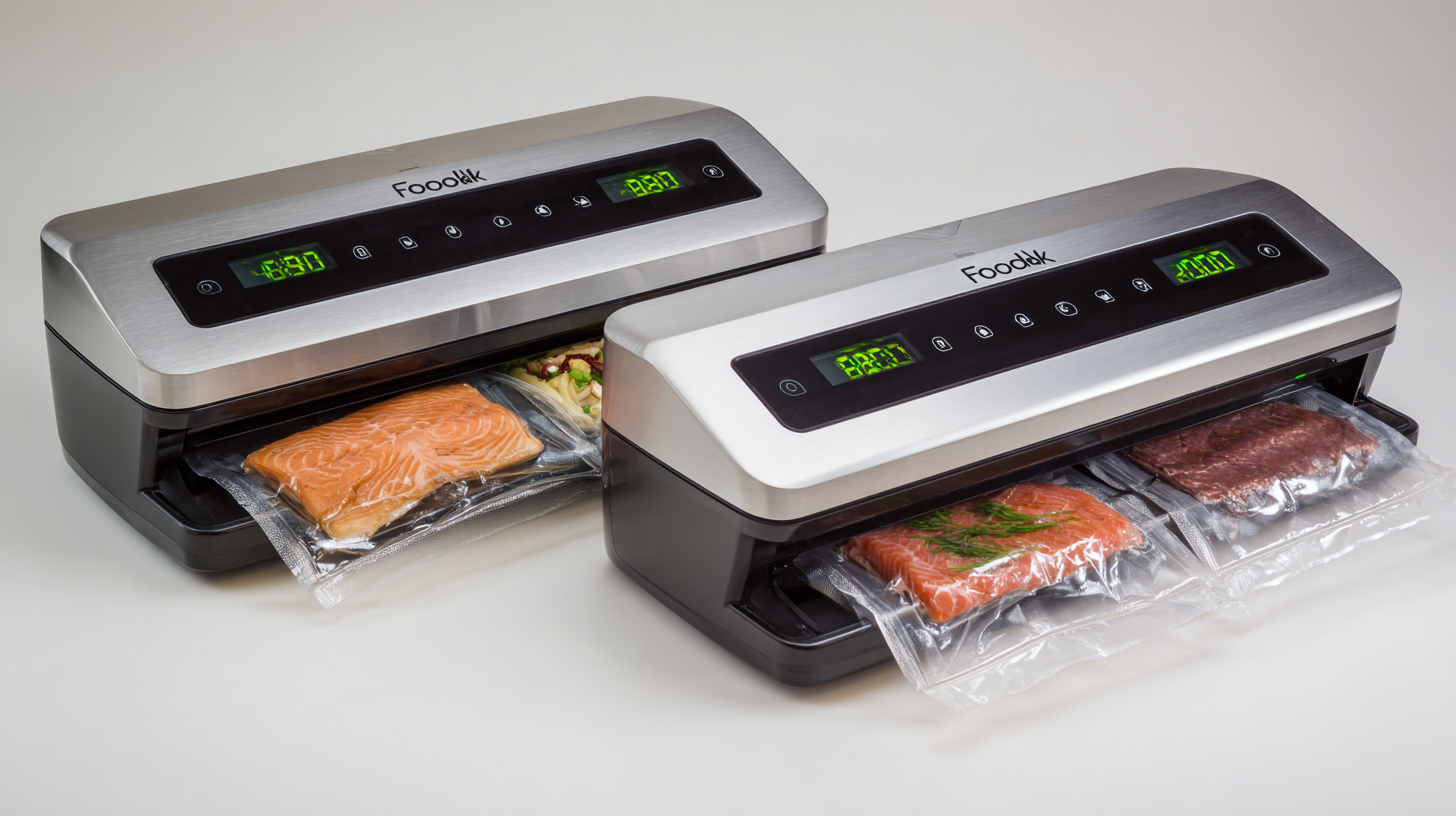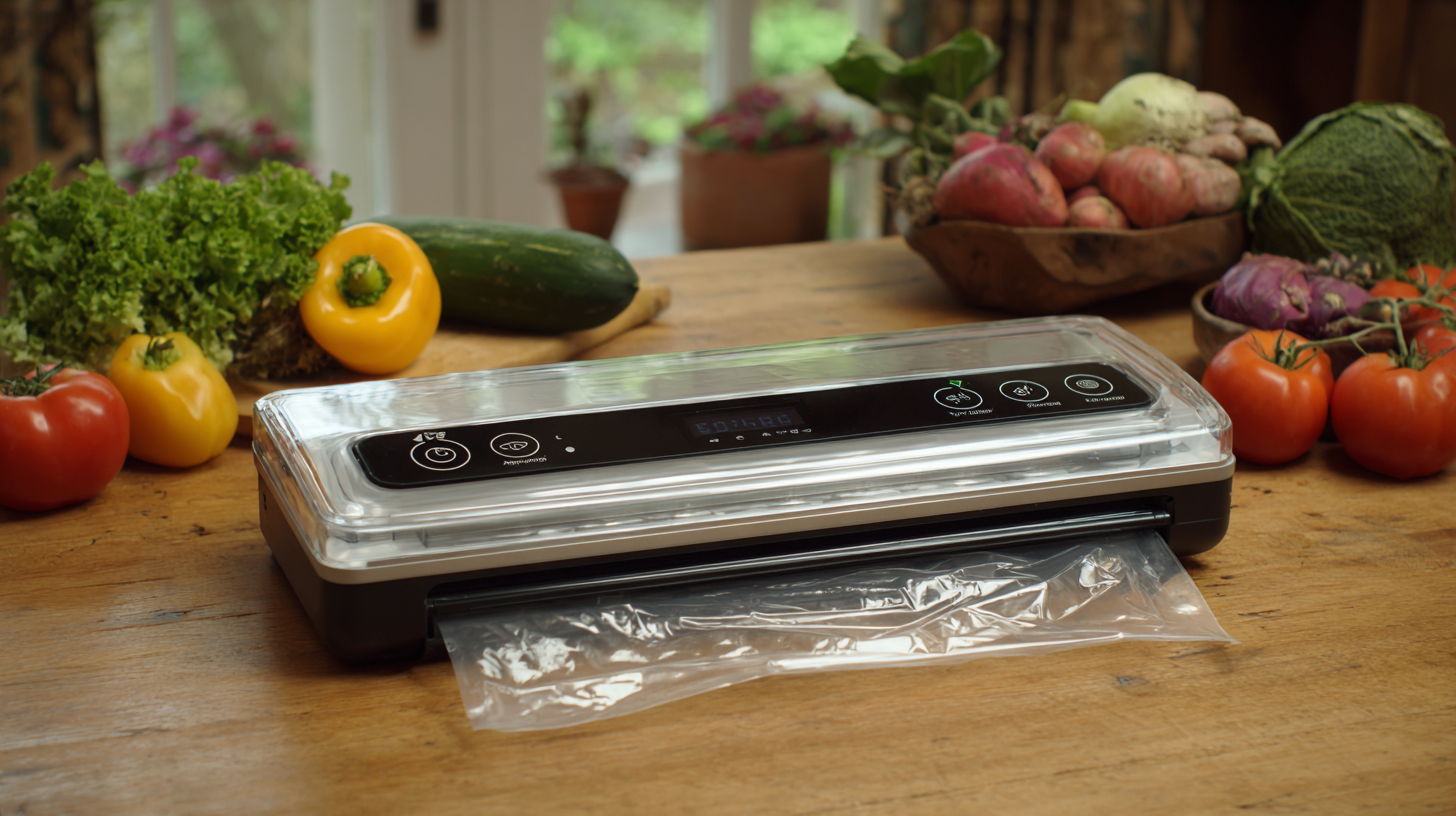About Us | Blog | FAQs | Tips/Troubleshoot | Contact Us | Machine Manuals | Demo Videos
How to Choose the Best Food Vacuum Sealer for Your Kitchen Needs
Vacuum sealing food has become an essential practice for many home cooks and professional chefs alike, owing to its substantial benefits in preserving food quality and extending shelf life. According to a report from the Food Preservation Association, using a food vacuum sealer can increase the storage life of perishable items by up to five times compared to conventional methods. This is particularly significant in reducing food waste, which, as the USDA states, accounts for roughly 30-40% of the food supply in the United States each year. Choosing the right food vacuum sealer not only helps in maintaining the freshness and flavor of your ingredients but also saves money and enhances overall kitchen efficiency.

In this blog, we will discuss the critical factors to consider when selecting the best food vacuum sealer to meet your unique kitchen needs, ensuring that you make an informed decision that aligns with your culinary goals.
Table of Contents
[Hide]
Understanding Food Vacuum Sealers: Types and Their Uses
 When selecting a food vacuum sealer, it's essential to understand the different types available and their specific uses. There are primarily three types of vacuum sealers: countertop models, handheld sealers, and external sealers. Countertop models are large and ideal for frequent use, capable of sealing various bag sizes and providing robust vacuum pressure. Handheld sealers, on the other hand, are portable and perfect for quick tasks, but may not offer the same durability as their countertop counterparts. Lastly, external sealers, often compact and user-friendly, are great for those who need a backup option without taking up too much space.
When selecting a food vacuum sealer, it's essential to understand the different types available and their specific uses. There are primarily three types of vacuum sealers: countertop models, handheld sealers, and external sealers. Countertop models are large and ideal for frequent use, capable of sealing various bag sizes and providing robust vacuum pressure. Handheld sealers, on the other hand, are portable and perfect for quick tasks, but may not offer the same durability as their countertop counterparts. Lastly, external sealers, often compact and user-friendly, are great for those who need a backup option without taking up too much space.
When choosing a vacuum sealer, it's helpful to consider your specific kitchen needs. For instance, if you frequently cook in bulk or want to preserve large quantities of food, invest in a high-quality countertop model. If you often find yourself sealing smaller portions or marinating food, a handheld sealer might be more convenient. Additionally, look for features such as adjustable sealing modes and built-in roll storage, which can greatly enhance usability.
Tip: Always ensure that the bags you use are compatible with your vacuum sealer to achieve the best results. Also, for optimal preservation, remember to remove as much air as possible, as it significantly extends the shelf life of your food.
Key Features to Look for in a Food Vacuum Sealer
When choosing the best food vacuum sealer for your kitchen needs, it’s essential to consider several key features that can significantly enhance your food preservation efforts. One of the most important features is suction power. A vacuum sealer with strong suction will effectively remove air from bags, preventing freezer burn and maintaining the quality of your food for a longer period. Look for models that offer adjustable suction levels to accommodate different types of food, from delicate items like berries to denser proteins.
Another feature to keep in mind is the sealing width. A wider sealing strip allows you to seal larger bags, which is ideal for bulk storage. This becomes particularly useful when preserving large cuts of meat or batches of prepared meals. Additionally, consider models that come with a built-in roll holder and cutter, making it easy to create custom-sized bags to fit your food storage needs perfectly.
Tip: Always opt for a vacuum sealer that includes a moist/dry food setting. This feature allows for optimal sealing regardless of the food's moisture content, preventing leaks and ensuring an airtight seal. Also, check for compatibility with various bag types, as reusable bags are an eco-friendly option that can save money in the long run.
Tips for Choosing the Right Size and Capacity for Your Kitchen
When selecting a food vacuum sealer for your kitchen, understanding the right size and capacity is crucial to meet your food preservation needs. A vacuum sealer that fits well in your kitchen can make meal prepping and storage significantly easier. Consider the amount of space you have and choose a model that can be conveniently stored away or used on your countertop without occupying too much room.
When evaluating size and capacity, think about how often you plan to use the sealer and the volume of food you typically prepare. For larger households or frequent entertainers, a model with a higher capacity can save time and reduce the number of sealing cycles needed. On the other hand, if you cook in smaller batches or have a limited storage area, a compact or handheld sealer might be sufficient. Look for features like adjustable sealing settings and bag sizes that accommodate various food items, ensuring versatility in your food preservation efforts.
Lastly, don't forget to consider the types of foods you'll be sealing. If you often store bulky items or liquids, a model with a wider opening or accessories for different food types can enhance your experience. Keeping these tips in mind will guide you to finding the perfect vacuum sealer that fits seamlessly into your kitchen routine.
Food Vacuum Sealer Capacity Comparison
Budgeting for Your Vacuum Sealer: Cost vs. Features
When choosing a vacuum sealer for your kitchen, budgeting plays a crucial role in balancing cost against essential features. Entry-level models may significantly reduce your initial investment and are perfect for those who only plan to use the sealer occasionally. However, these basic versions often come with limited functionality, such as fewer sealing options and less durable construction, which might not hold up against frequent use.
On the other hand, investing in a mid-range to high-end vacuum sealer can offer numerous benefits. These models typically include advanced features like adjustable sealing settings, built-in roll storage, and even food preservation options that enhance the longevity of your food. While the initial price tag may be higher, the improved performance and durability can ultimately save you money by reducing food waste and providing versatility in meal prep. Evaluating how often you cook, the types of food you preserve, and your storage needs will help you determine the best vacuum sealer for your kitchen without overspending.
Maintaining Your Vacuum Sealer for Longevity and Efficiency
Maintaining your vacuum sealer is crucial for ensuring its longevity and efficiency. According to a report from the Food Processing Association, improper maintenance of food preservation equipment can lead to a 30% decrease in performance and a significantly shorter lifespan. Regularly checking and cleaning the sealing strips, ensuring they are free of debris and wear, can prevent air leaks and will enable your device to seal bags properly. A simple wipe with a damp cloth after use can extend your vacuum sealer's effectiveness substantially.
Additionally, organizing regular maintenance schedules, such as replacing filters and checking seals, can lead to increased efficiency. The International Journal of Food Science highlights that consistent upkeep can enhance food preservation quality by up to 50%. Using vacuum sealing bags specifically designed for your model also plays a critical role; lower-quality alternatives can damage the sealer—reducing both performance and the quality of stored food. By investing time in the care of your vacuum sealer, not only do you maintain peak performance, but you also ensure that your food remains fresh and safe for longer periods.


